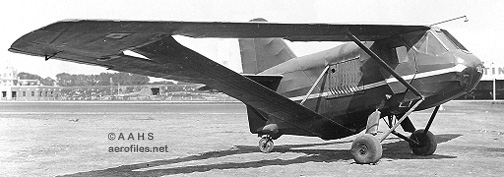This bizarre aircraft was built in Missouri in 1931 and was the brainchild of a guy called Ben Brown. This pusher design was powered by a 95 hp Cirrus Mark III and had a “Bellanca-like” strutted tandem wing with joined wingtips that form a sort of diamond-shaped wing. Ailerons on the wingtips and elevons on the forward wing, close to the fuselage. It seems it was test flown, but no data is available about that or about its fate.
Boxy yet alluring.
Photo and main source of information: the great Aerofiles place.










